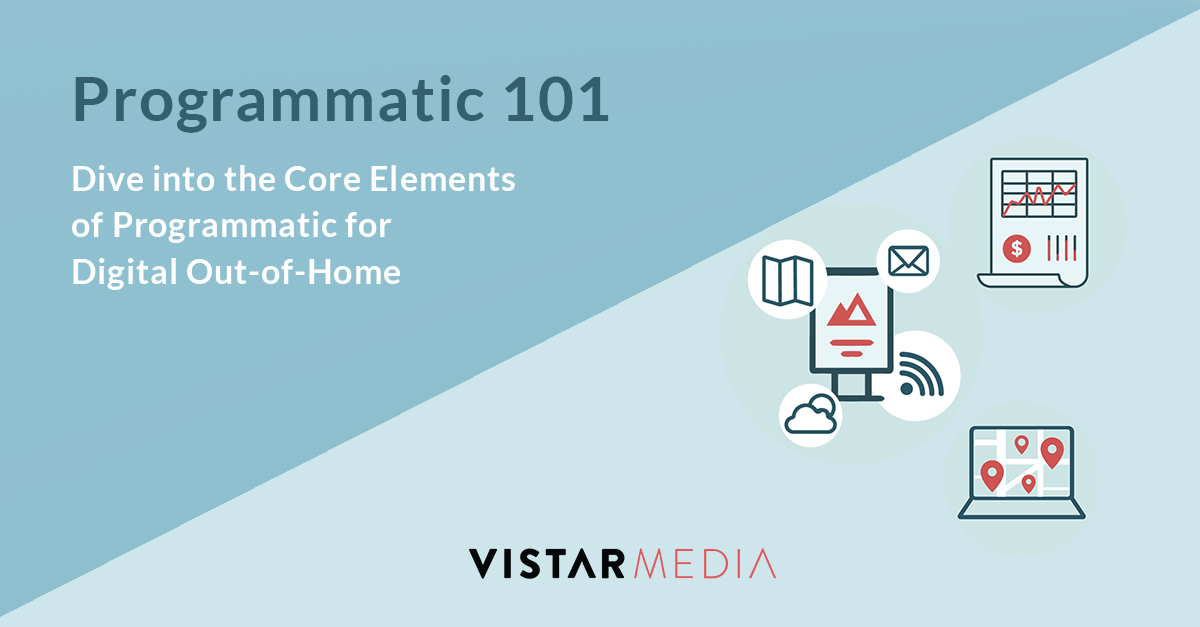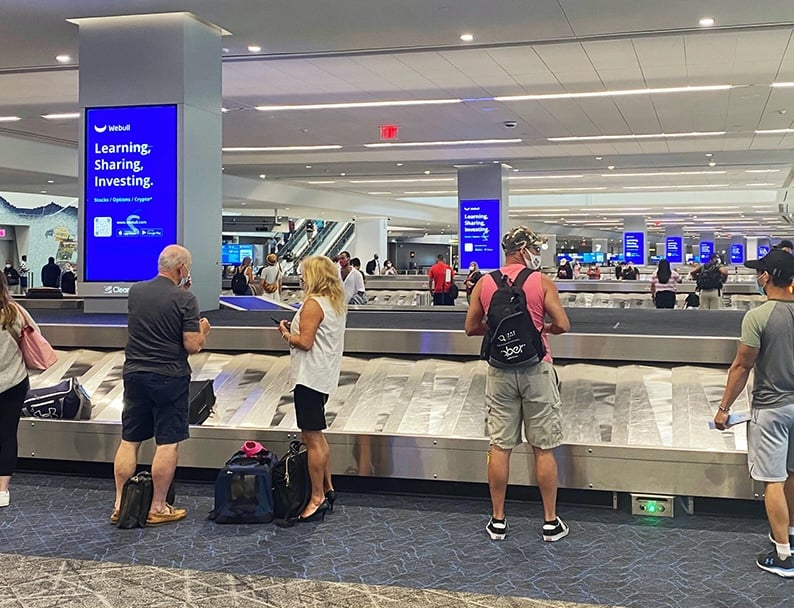
Programmatic – it’s a hot topic and one of those buzzwords that you’ve probably heard used by countless people… who may or may not actually know what it means. With a growing interest in ways technology can advance out-of-home media, many are trying to learn about “programmatic” and what it could offer to the digital out-of-home industry. To help simplify these conversations, we’ve broken out the core elements of programmatic into a three-part series: Programmatic 101. This is part three - to read the previous posts, check out Programmatic 101: Breaking Down the Buzzword and Pulling Back the Curtain on How Programmatic Really Works.
Unique considerations for OOH
As we’ve outlined in our previous posts, programmatic technology provides tangible benefits for buyers and media owners and allows the OOH channel to operate much more like online mediums. This is important as marketers increasingly seek to apply consistent strategies across all channels of spend. At Vistar Media, we want OOH to operate as much like online as possible - while still preserving the qualities that make OOH so impactful, and supporting the unique requirements for this physical-world medium.
Programmatic DOOH is a 1:Many Medium
In digital out-of-home, one spot does not equal one impression. That’s because a single ad spot can reach multiple people. Digital out-of-home is inherently a 1:many medium, generating hundreds or thousands of impressions from a single ad placement. Fortunately, Vistar is able to ingest the impression data publishers have from 3rd parties, such as Nielsen or Geopath, to ensure they are credited appropriately for each impression that delivers.
Now you may be asking: how does this work?
When an ad call is sent, Vistar assigns an impression value to that spot based on the audited impression numbers, and passes it to the bidder along with the ad call. This allows digital buyers to transact using impression-based budgets, just as they do online. By eliminating that barrier to entry, marketers gain greater access to this valuable channel and media owners are able to generate programmatic revenue they would have otherwise never received.
Creative Requirements for DOOH
In the online world, the creative approval process is automated. To mimic this workflow, Vistar has built a system in which every creative submitted will be visible to the media owner to view, provide feedback, and ultimately approve or reject.
Now you may be asking: why isn’t this automated?
The nature of digital out-of-home means that these ads are displayed in public environments. When you take into consideration the stakeholders beyond buyers and sellers, there are real estate owners, community advocacy groups and government oversight. So, every creative that runs on an out-of-home screen must be reviewed and approved by the media owner. Creative approvals are set up in Vistar to respect each of our partner’s audiences – we want to provide media owners with the ability to control what runs on their screens.
One more thing to consider in the creative process is transcoding. Digital out-of-home screens can vary greatly, from the billboards in Times Square to screens in malls and elevators. To ensure creative is properly displayed across all screen types, Vistar provides automated creative transcoding, which enables us to support various resolutions and files. This automated process applies to both static digital and video creative.
To learn more about programmatic digital out-of-home, check out our comprehensive guide:



.jpg)
